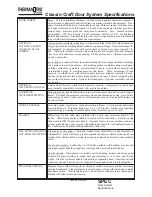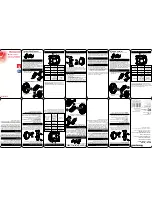
SATEL
INT-SZK
3
4. Drill the holes for wall plugs (anchors).
5. Run the wires through the opening in the enclosure base.
6. Using wall plugs (anchors) and screws, fasten the enclosure base to the wall. Select wall
plugs specifically intended for the mounting surface (different for concrete or brick wall,
different for drywall, etc.).
7. Connect the CLK, DTA and COM terminals to the appropriate terminals of the control
panel expander bus (see the control panel installer manual). It is recommended that an
unshielded non-twisted cable be used for making the connection. If you use the twisted-
pair type of cable, remember that CLK (clock) and DTA (data) signals must not be sent
through one twisted-pair cable. The wires must be run in one cable.
8. Connect the wires for control of electric strike, electromagnetic lock or another door
actuator to the NO terminals (see Fig. 2). It is not recommended that the door actuator be
powered from the same source as the code lock.
Fig. 2. Connecting the actuator to the code lock.
9. If the code lock is to supervise the door status, connect the detector supervising the door
status to the IN and COM terminals. If the code lock is not to supervise the door status,
connect the IN terminal to the COM terminal or, when configuring the code lock, set value
0 for the “Max. door open time” parameter.
10. Connect the power wires to the +12V and COM terminals. The code lock may be powered
directly from the control panel, from an expander with power supply or from a power
supply unit.
11. Close the enclosure.
12. Power on the alarm system.
13. Start the identification function in the control panel (see the control panel installer
manual). The code lock will be identified as “INT-SZ/SZK”.
2.1 Address setting
An individual address (different from that in the other devices connected to the control panel
bus) must be set in the code lock.
To set the address, use the DIP switches on the electronics board. The switches have
numbers assigned to them. The number for OFF position is 0. The numbers assigned to the
switches in ON position are presented in the table 1. The sum of these numbers is the
address set.





























